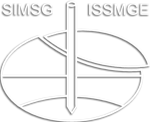Analysis and Characterization of Wastes in a Closed Dumpsite of an Urbanized City
Analysis and Characterization of Wastes in a Closed Dumpsite of an Urbanized City
Analysis and Characterization of Wastes in a
Closed Dumpsite of an Urbanized City
M. A. N. Tanchuling1, B. A. Requejo2, and M. B. L. D. Diola3
1Professor, University of the Philippines Diliman, Quezon City, Philippines, email: [email protected]
2Design Engineer, AMH Philippines Inc., email: [email protected]
3Assistant Professor, University of the Philippines Diliman, Quezon City, Philippines, email: [email protected]
Abstract
Wastes from a closed 4.6-ha dumpsite in a 1st Class Urbanized City in Mindanao Island in the Philippines were characterized to evaluate its feasibility as feed of a proposed Waste-to-Energy (WtE) plant. The closed dumpsite was visually sectioned into five (5) strips with one strip being sampled per day for a total of five days. The excavated wastes were then weighed and then screened using a trommel with a 2x2 square mesh. The coarse and fine fractions of the screening were manually sorted into general categories: metal, soft plastic, hard plastic, wood, leather, rubber, textile, e-waste, rocks and stones, ceramics, glass, and fine residuals. Each of these waste categories were then weighed after sorting. The dumpsite is found to be comprised of 61% fines and 39% coarse wastes. Around 90% of the coarse fraction consisted of combustibles, with 74% of these consisting of soft plastics. Meanwhile, rocks and stones at 9% compose majority of the remaining non-combustible wastes in the coarse fraction. On the other hand, 80% of the fine fraction consisted of non-combustibles, with 78% of the total consisting of fine residuals. Meanwhile, soft plastics at 18% compose majority of the combustible wastes in the fine fraction. The significant amount of combustible matter and the heavy contamination of the sorted waste fractions in general make the wastes in the dumpsite a viable feed for WtE.
Keywords: landfill mining, solid waste management, dumpsite
M. Antonia Tanchuling; B. Requejo; M. Brida Lea Diola
9th International Congress on Environmental Geotechnics (ICEG2023)
Landfilling
https://doi.org/10.53243/ICEG2023-137
